Today we take you to Masuria, to the deepest former East Prussia. Framed by Lake Dargin, Lake Łabap and Lake Mamry, the sleepy village of Sztynort, which was called Groß Steinort until 1928 and then simply Steinort until the end of the Second World War, lies off the main routes. Today, the village with its small marina has only 170 inhabitants. However, it can look back on an interesting history and, with Sztynort Castle has a complex that on the one hand reflects the darkest phase in the history of relations between Poles and Germans, but on the other hand also gives hope for a peaceful common future.
The History of Sztynort
As early as in the 16th century, the East Prussian noble family Lehndorff was granted a fiefdom, which included the village and its surroundings and was known as Steinorter Wildnis (Sztynort Wilderness). Steinort developed into the ancestral seat of the noble family and already in the 17th century the present baroque Sztynort Castle was built. A few years earlier, the family laid out the castle park, which still exists today, along with an avenue of oaks. The magnificent estate fell into disrepair at the beginning of the 20th century and was restored in the 1930s. Heinrich Graf von Lehndorff, grandson of the Prussian general of the same name, was the last German lord of the castle.
Famous guests
From 1941, he shared the castle with Nazi Foreign Minister von Ribbentrop, best known for the Molotov–Ribbentrop Pact he signed, who occupied the left wing of the building. After the German invasion of the Soviet Union, the Reich government had moved its activities to Masuria in order to better coordinate the war against the Soviet Union from here. The Mauerwald and Wolfsschanze facilities were within easy reach from here, so the stately Steinort was ideal for the minister’s needs.
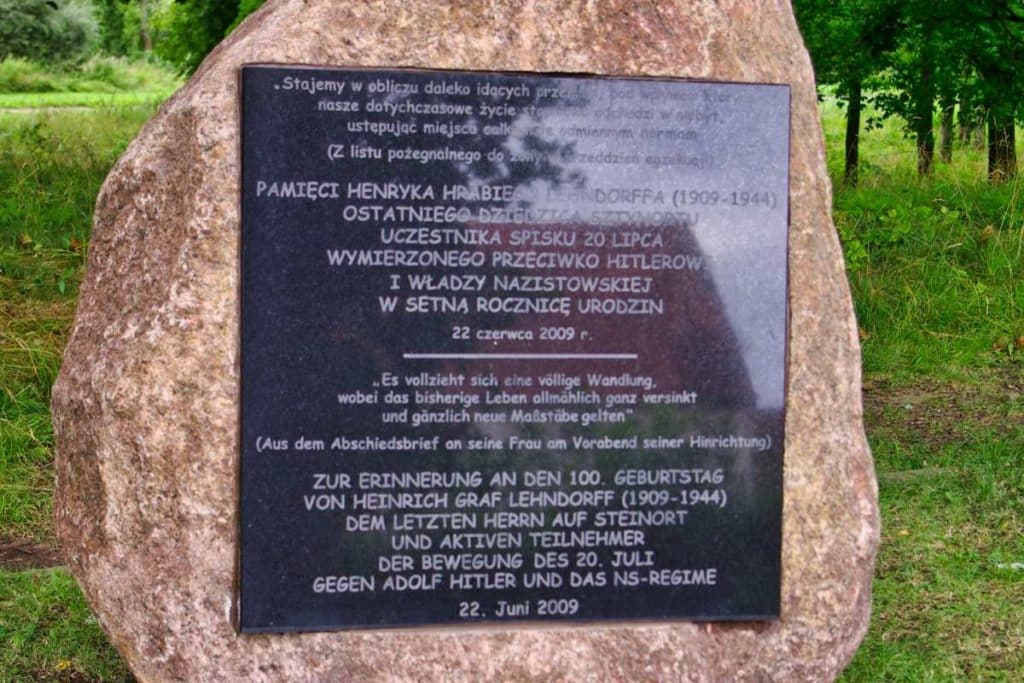
A Haven of Resistance
Von Lehndorff was a close friend of the opposition-minded Marion Gräfin (Countess) Dönhoff, who visited him here several times. He witnessed a massacre of 7,000 Jews in what is now Belarus during World War II and joined the resistance group against the regime led by Count von Stauffenberg. Members of the resistance met in the castle park and made their plans to assassinate Hitler and overthrow the regime here – at a time when the Nazi foreign minister may have been having tea just a few meters away. After the failed assassination attempt on Hitler (for more on this topic, see our Wolfsschanze article), von Lehndorff was sentenced to death along with other resisters and executed. The family was then expropriated by the Nazis.
A Treasure Hidden in the Fireplace
Wisely, however, Heinrich von Lehndorff had already had a large part of his possessions taken to a nobleman friend in Kriebstein Castle in Saxony (other sources say that Countess Dönhoff had done this). It was not until 1986 that the treasure was found there by chance in a fireplace. According to the will of von Lehndorff’s widow, the treasure, which includes silver, porcelain and gold work as well as a large tapestry, is schould be displayed at Sztynort Castle in the future.
Sztynort After the War
The emphasis is on the word “should”, because unfortunately the castle is in a pitiful condition. After the war, it was first used by the Red Army, then by an agricultural production community, and came into private hands in the 1990s. The new Austrian owner, however, was financially unable to undertake the urgently needed restoration measures.
A New Owner and a New Hope
It was only a few years ago that a German-Polish foundation took over the complex, and since then experts from the Technical University of Dresden have been taking care of its restoration, the first step being to ensure that the castle did not collapse. Sztynort was thus saved literally at the last minute.
The Works are Progressing
In the meantime, a lot is happening here, even the overgrown castle park has been worked on by German youths and is now accessible again. The castle, on the other hand, is being carefully restored by experts from Dresden; among other things, a scientist developed his own method for securing the wooden beams. There is already a small exhibition in a side wing of the castle that provides information about the history of this place. In the future, groups will again be able to tour the property. At the end of 2020, permission was also granted to set up a café here. In the following, I want to show you what has already been done.
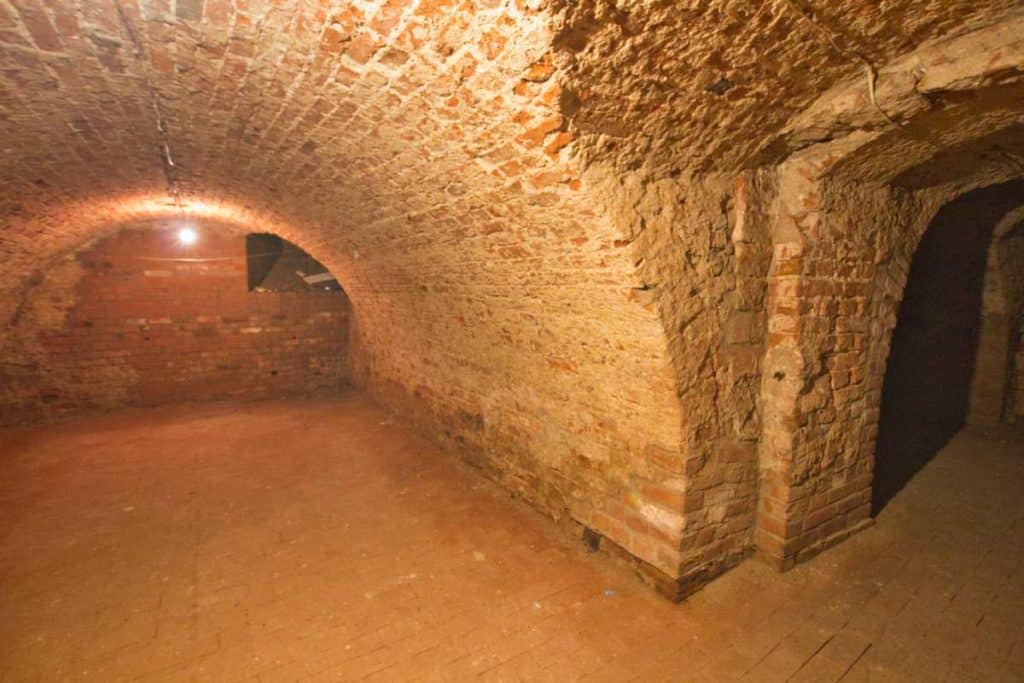
Basement
The very first thing that had to be done was to secure the foundation and basement of the building. The Masurian company Hohlbud was commissioned with the work. Due to the nearby lake and the severe winters in former East Prussia, the castle was in danger of collapsing also because of the foundation. A new drainage system and a continuation of the sewerage system has already been completed on the north and east sides of the castle. Here, as in other parts of the building, it has been shown that the cooperation of German and Polish experts works very well even during the Corona pandemic.
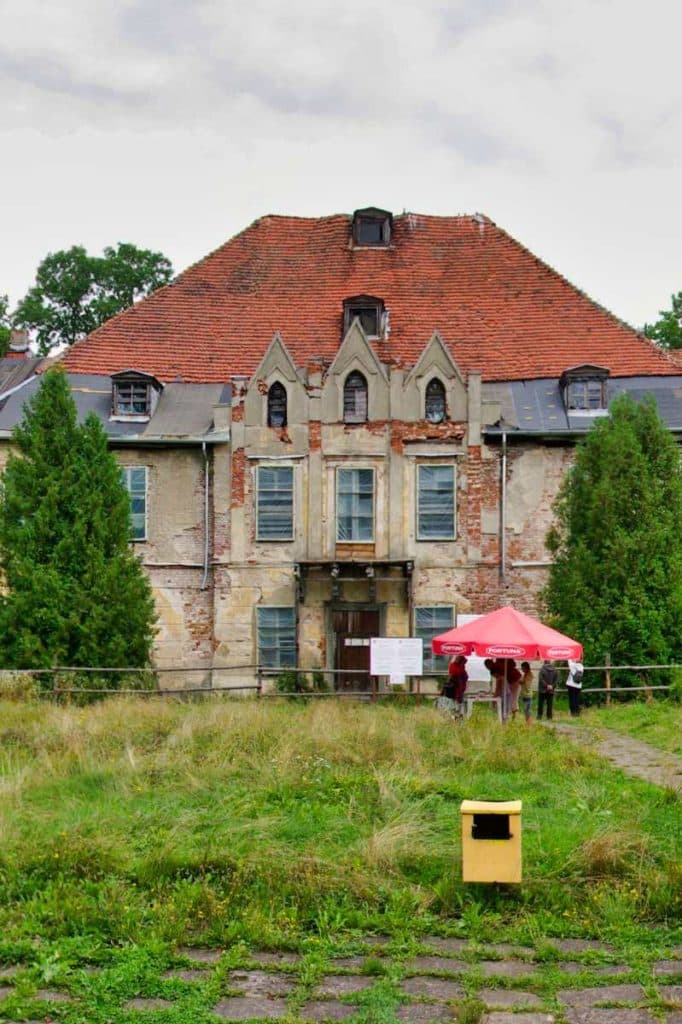
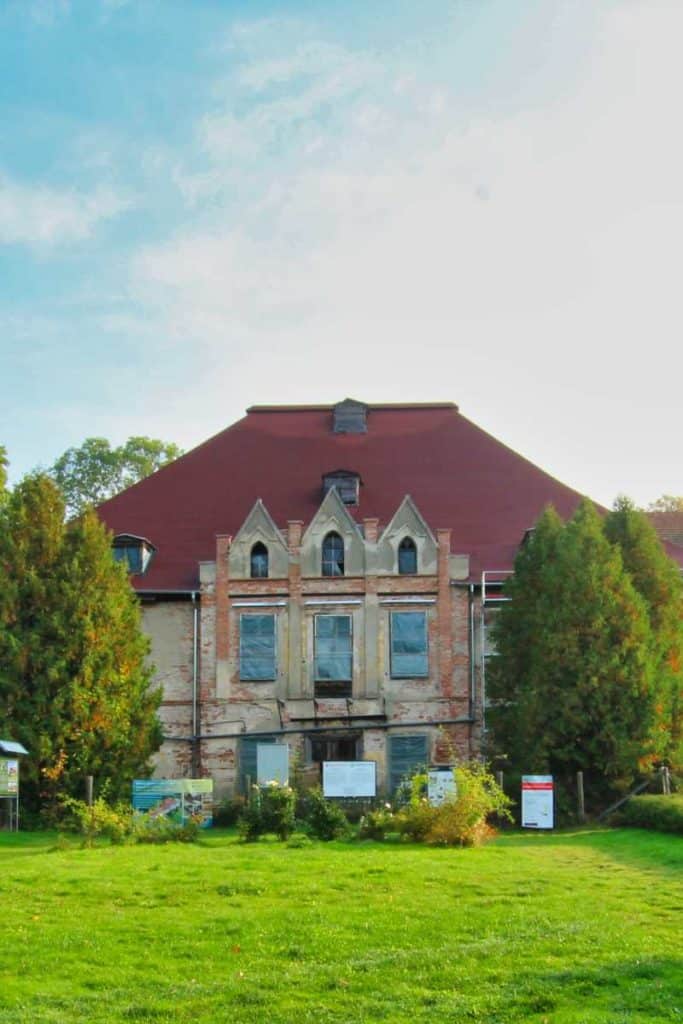
Roof and beams
A special highlight are the painted baroque ceiling beams in the castle, which cover a total area of 2000 m² and are currently being carefully restored. You can already learn about their splendor from the historical photos in the small exhibition. Some of them have already been dismantled and taken to Trossingen in Germany for restoration. Here, the wood glue experts are taking care of an analysis and developing the ideal method for the beams, which will then be applied to the rest of the building on site.
However, the beam supports are causing problems. Professor Wolfram Jäger, who is supervising the work, sees the poor quality of the beam supports as the main problem and wants to remedy this thanks to a process he has developed using carbon elementas.
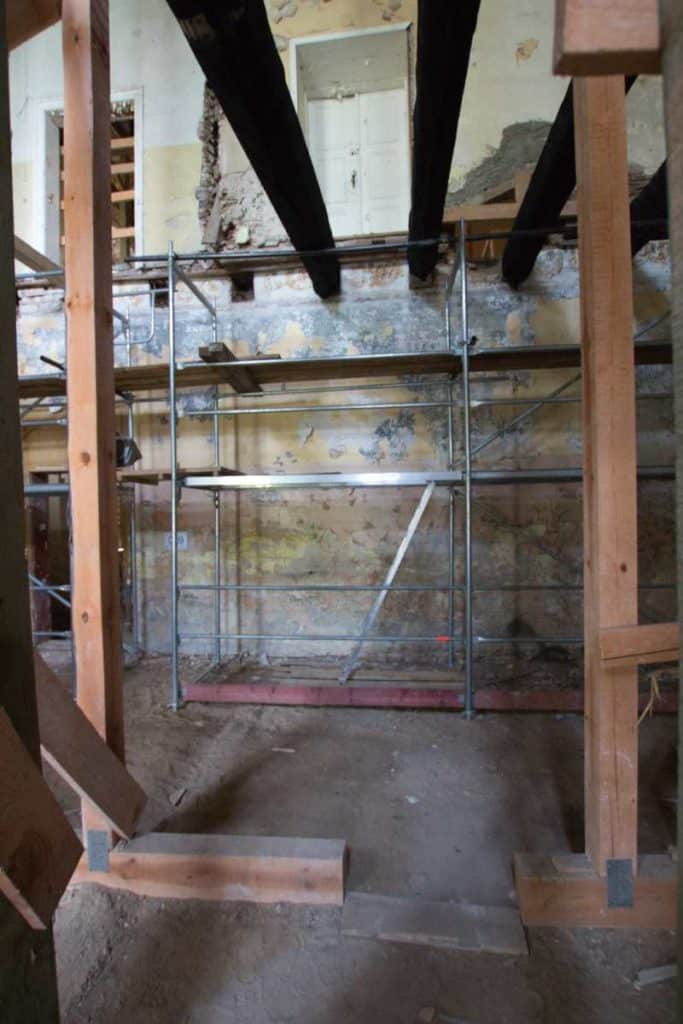

Walking Inside Sztynort Castle
The interior also had to be secured, as various parts of the building were threatening to literally drift apart. The northwest corner of the building in particular was leaning dangerously outward. For this purpose, the company relied on a new type of technology consisting of fiberglass anchors, which were used here for the first time ever. Like a belt, the cables at the level of the upper floor now hold the complex together.
While walking through the well-secured corridors, I still had to wear a construction helmet during my visit, as there is still a small residual risk of one of the beams falling on my head. The engineer Fabian Meyer from the TU Dresden then told me that what I was seeing was relatively unusual. Steinort Castle, in fact, has never been rebuilt. And although the condition is still poor, it is the original state and for that reason alone this unique architectural monument should be secured.
Rescuers wanted
If you want to help with the restoration of the castle, you are welcome to do so. At the bottom of this page you will find a reference to the donation account for the preservation and restoration of the castle. Because even if the German parliament has already provided 1.5 million euros to secure the castle, this will not be enough.

Castle Park
Besides the castle, however, there is more to see in the small village. It stands on a hill that slopes down to the lake in the southwest. To the northwest, on the other hand, there is a park with wide oak avenues, which was later transformed into an English style landscape garden. The park has a neoclassical tea house designed by Carl Gotthard Langhans, who made himself immortal with the Brandenburg Gate in Berlin.
Mausoleum
In Sztynort, on the opposite side of the small Sztynort Lake on a branch canal, there is also the family mausoleum of the von Lehndorffs, which is well worth seeing. The family burial chapel, designed in the 19th century by Friedrich August Stüler, the builder of the New Museum in Berlin and co-designer of Schwerin Castle, can be leisurely explored as part of a walk and was only saved from decay in 2020. Next to it is also a small cemetery.
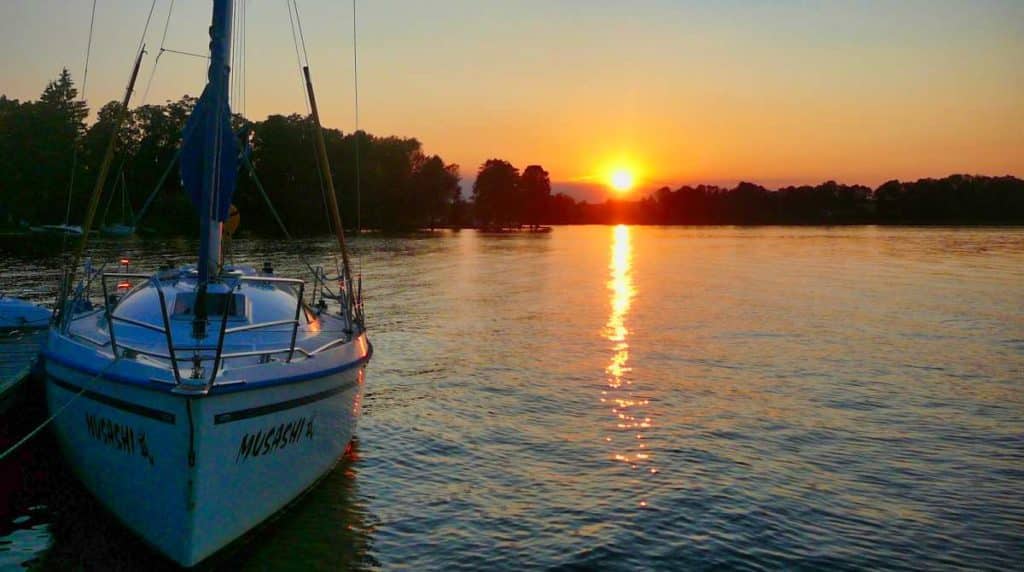
The Lake
Lake Sztynort below the castle has a small marina and is a popular landing place for yachtsmen. It is connected to the larger Masurian lakes via a canal and is an ideal little haven for those who want to avoid the crowded piers in other places. So if you are traveling by sailboat or houseboat, you should definitely stop by here.
Book recommendations
You want to know more about the region? Then our book tips will help you!
- Jaath, Kristine (Author)
Beautifullay illustrated book with many desriptions of Masurias fascinating nature and architecture.
Classsic travel guide with a lot of information about Masuria and the country in general.
How did you like our trip to Sztynort? Let us know and write us a comment! And feel free to follow Wildeast on Facebook or Pinterest to stay up to date with the latest articles.

